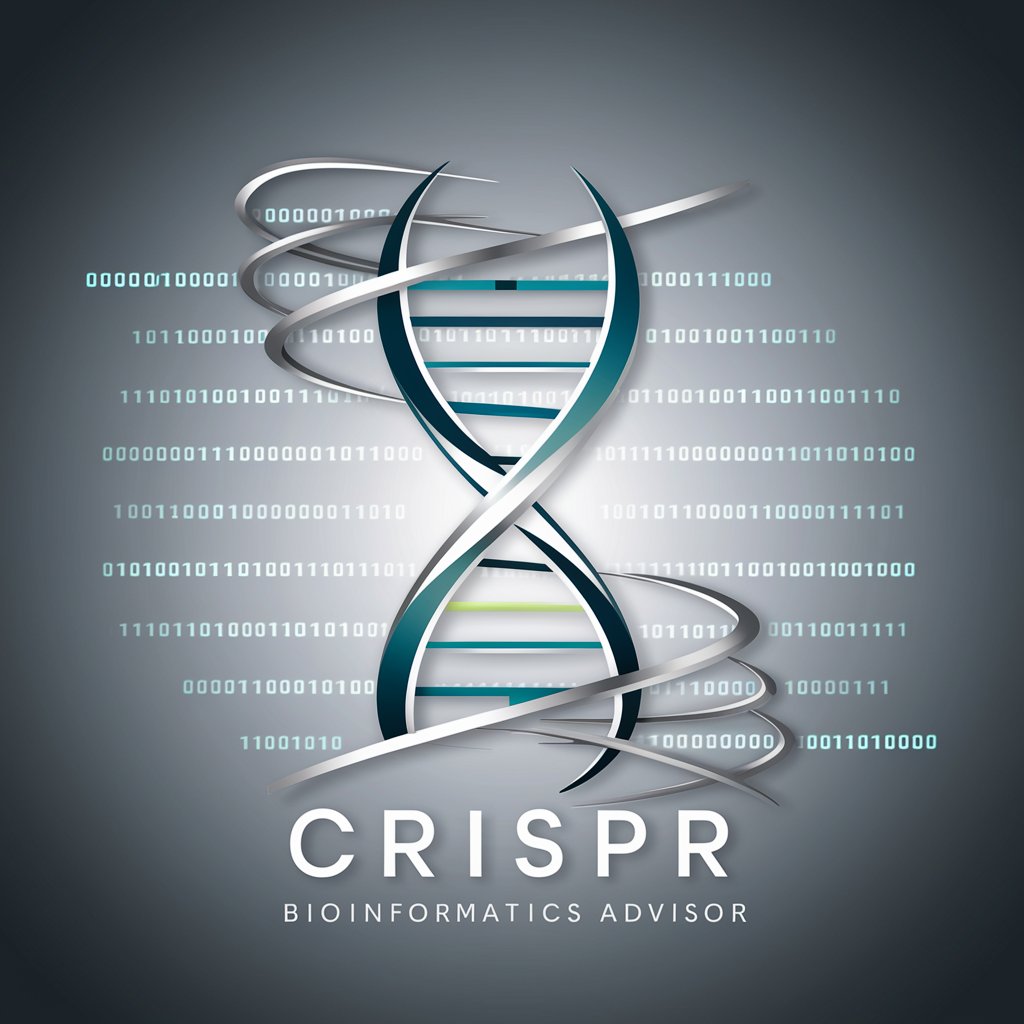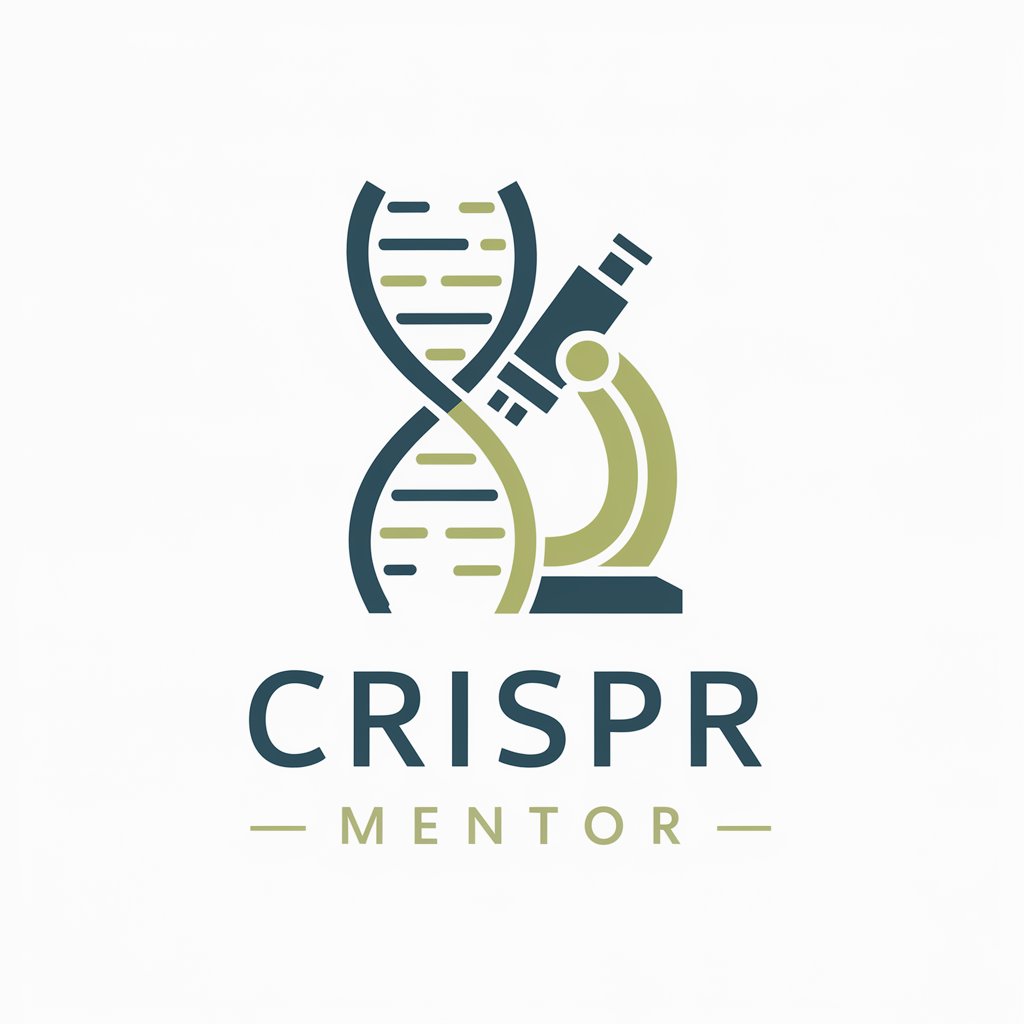
Crispr Gene Editing for Agriculture - CRISPR Gene Editing Guide

Welcome! Ready to explore genetic modification together?
Empower crops with precision editing
Please enter an organism and trait to modify. (For example: Potatoes Mass)
Get Embed Code
Crispr Gene Editing for Agriculture: An Overview
Crispr Gene Editing for Agriculture is a specialized tool designed to harness the power of CRISPR/Cas9 technology for agricultural advancements. This tool is tailored to assist in the precise modification of plant genomes to achieve desirable traits such as improved yield, disease resistance, and stress tolerance. By enabling targeted edits at specific locations within the genome, it facilitates the development of crops with enhanced nutritional profiles, reduced reliance on chemical inputs, and adaptation to changing climate conditions. For instance, the modification of the genome to increase the mass of cucumbers involves identifying and editing genes responsible for fruit growth and development. Another example includes engineering disease resistance in wheat by targeting and modifying genes that confer vulnerability to pathogens, thus illustrating the practical application of CRISPR technology in addressing critical agricultural challenges. Powered by ChatGPT-4o。

Key Functions and Real-World Applications
Enhancing Crop Yields
Example
Increasing the size and mass of fruits like tomatoes or cucumbers.
Scenario
By editing genes that regulate cell division and expansion, crops can be developed to produce larger fruits, contributing to higher yields per plant. This is particularly useful for farmers looking to maximize output in limited space.
Improving Disease Resistance
Example
Engineering wheat to resist fungal infections.
Scenario
Through the modification of specific genes, crops can be made resistant to common diseases, reducing the need for chemical fungicides and enhancing crop survival and productivity. For example, targeting the genes that interact with the pathogen's infection mechanism can prevent the disease from taking hold.
Enhancing Nutritional Value
Example
Biofortification of rice with beta-carotene to combat vitamin A deficiency.
Scenario
CRISPR can be used to introduce genes responsible for the production of essential nutrients, such as beta-carotene in rice, known as Golden Rice, providing a sustainable solution to nutritional deficiencies in vulnerable populations.
Developing Stress-Resilient Crops
Example
Engineering drought tolerance into maize.
Scenario
By editing genes involved in water retention and stress response, crops can be made more resilient to environmental stressors like drought, ensuring food security in the face of climate change.
Target User Groups for Crispr Gene Editing for Agriculture
Agricultural Researchers
Scientists and researchers focused on crop improvement benefit from using CRISPR technology to explore genetic factors behind plant traits, develop new crop varieties, and contribute to sustainable agriculture.
Seed Companies
Companies involved in the development and distribution of seeds can utilize CRISPR to engineer advanced seed varieties with desirable traits such as increased yield, pest resistance, and climate adaptability, offering innovative solutions to farmers.
Farmers and Agricultural Producers
Farmers can directly benefit from planting CRISPR-edited crops that are designed to thrive in their specific environmental conditions, require fewer chemical inputs, and provide greater nutritional benefits, leading to improved productivity and sustainability.
Policy Makers and Regulatory Bodies
These groups are crucial for the integration of CRISPR-edited crops into the food supply, as they assess the safety, ethics, and regulatory frameworks that guide the development and commercialization of genetically edited plants.

Using CRISPR Gene Editing for Agriculture
Initiate the process
Begin by accessing a platform offering CRISPR gene editing resources, such as initiating a trial on a dedicated website without the need for a login or subscription.
Identify target traits
Determine the specific traits in crops that require improvement, such as disease resistance, drought tolerance, or yield enhancement, based on agricultural needs and goals.
Select candidate genes
Utilize bioinformatics tools and databases to identify and select candidate genes associated with the desired traits for modification or enhancement.
Design gRNAs
Design guide RNAs (gRNAs) that will guide the CRISPR-Cas system to the specific loci in the genome where edits are intended, ensuring specificity and efficiency.
Perform gene editing
Use CRISPR-Cas components to introduce the designed gRNAs into target plants, followed by validation of the editing through genotyping and phenotyping analyses.
Try other advanced and practical GPTs
FanFic Writer by Fictions.ai
Craft Your Universe with AI Imagination

Commit Translator
Translate commit messages with AI precision.

BEST CHRISTMAS GIFT IDEAS 🎈
Discover the Perfect Gift, Powered by AI

BeL2
Empowering Bitcoin with Smart Contract Capabilities

GPad
Elevate Your Game with AI-powered Puzzle & Dragons Insights

日本語English変換処
AI-powered, seamless language translation

Ziggy 0.12 (beta)
Empowering Zig Learners with AI

Pool Performance
Optimize Your Swim with AI

Hot Rod Artist
Cartoonish Hot Rods, AI-Generated

Autism Ally
Empowering autism support with AI.

ADALYTICAL
Empowering code generation with AI

Luther 1521
Experience Reformation-Era Theology, Powered by AI

FAQs on CRISPR Gene Editing for Agriculture
What is CRISPR gene editing?
CRISPR gene editing is a genetic engineering technique that allows for precise modifications to the DNA of organisms, including plants, to alter specific traits such as yield, quality, and resistance to stresses.
How does CRISPR improve crop traits?
CRISPR targets and modifies genes responsible for specific traits in crops, enabling improvements in yield, disease resistance, and environmental adaptability without the need for traditional crossbreeding techniques.
Is CRISPR gene editing safe for use in agriculture?
CRISPR is considered a precise and safe method for crop improvement. Regulatory bodies assess the safety of CRISPR-edited crops, which are subject to rigorous testing before approval for commercial use.
Can CRISPR be used to create GMOs?
Yes, CRISPR can be used to create genetically modified organisms (GMOs), but it can also create edits that mimic natural or traditional breeding changes, sometimes resulting in products not classified as GMOs under certain regulations.
What are the ethical considerations of using CRISPR in agriculture?
Ethical considerations include the potential for unintended effects on ecosystems, gene flow to wild relatives, and the accessibility of the technology for all farmers, ensuring it benefits rather than exacerbates inequalities.





